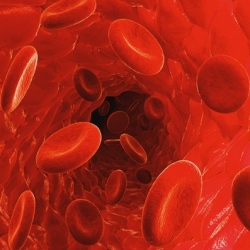
Whether it’s a stethoscope, blood pressure cuff or a carefully placed pair of fingers, current approaches to monitoring blood flow typically rely on readings from a single point of the body. Scientists have developed a new technology they say paints a more complete picture.
The imaging technique tracks blood flow around the body and does so without needing to make contact with the skin, providing a tool that could prove useful in treating everybody from severe burn victims to the elderly.
Developed by researchers at the University of Waterloo, the device is claimed to be the first portable system capable of monitoring a patient’s blood flow at various arterial points at the same time. The system makes use of a non-invasive light-based method for tracking cardiovascular activities called Photoplethysmography (PPG).
This technique has been around since the 1930s and evaluates changes in light intensity resulting from changes in local blood volume. But as it requires close proximity to the skin, its use has been mostly limited to short-term at-rest monitoring.
The team sought to adapt PPG for longer distance monitoring, which involved designing an entirely new system aimed at pulling hemodynamic waveforms without making contact with the skin.
It relies on a patent-pending technology called Coded Hemodynamic Imaging, which works essentially as an array of virtual sensors that measure blood flow through different parts of the body.
"By way of comparison, think of measuring the traffic flow across an entire city rather than through one intersection," explains Robert Amelard, PhD candidate in systems design engineering at Waterloo University.
Readings taken at different pulse points are passed back to a computer so the subject’s blood circulation can be continuously monitored. By imaging entire bodies, and even of different patients at the same time, the researchers say the system can enable new advanced monitoring techniques that haven’t been possible previously.
